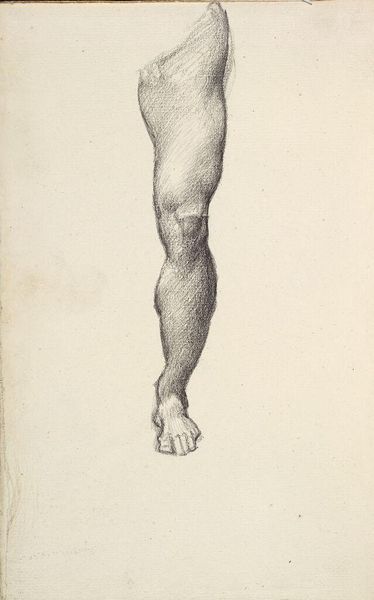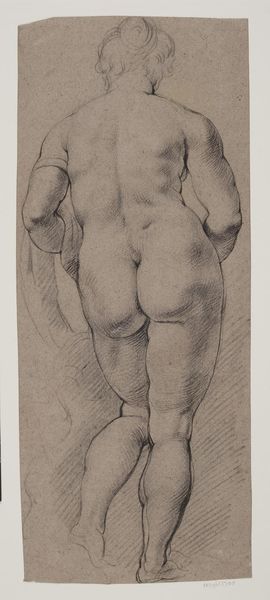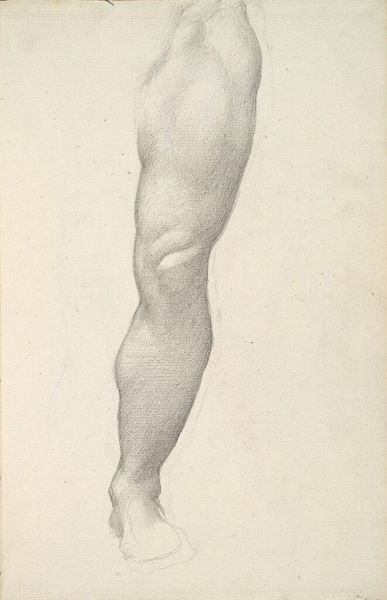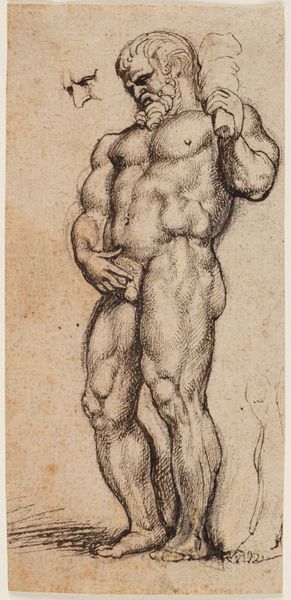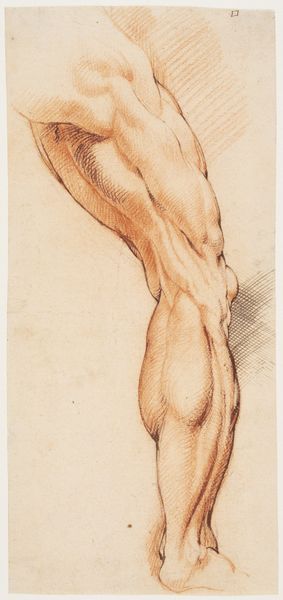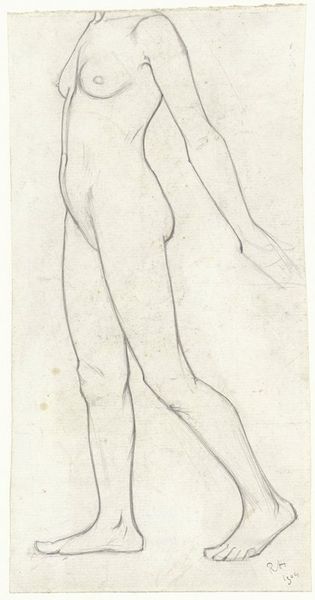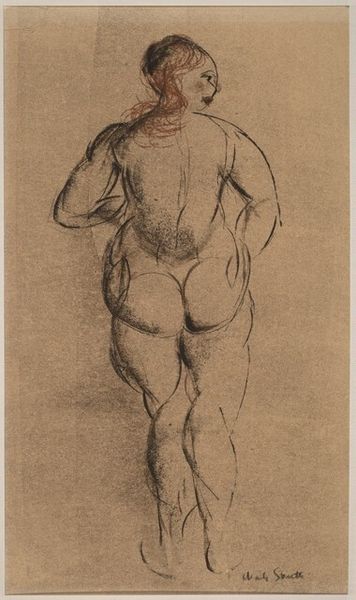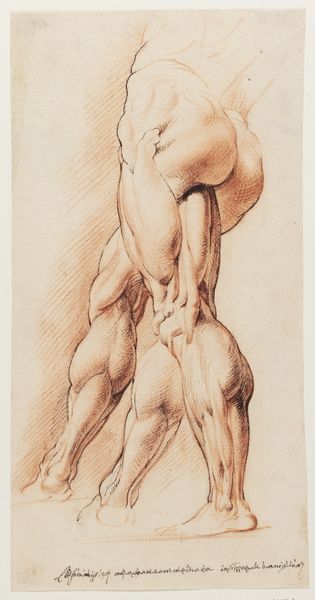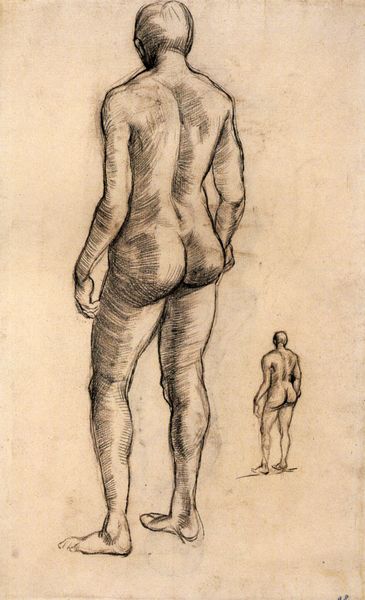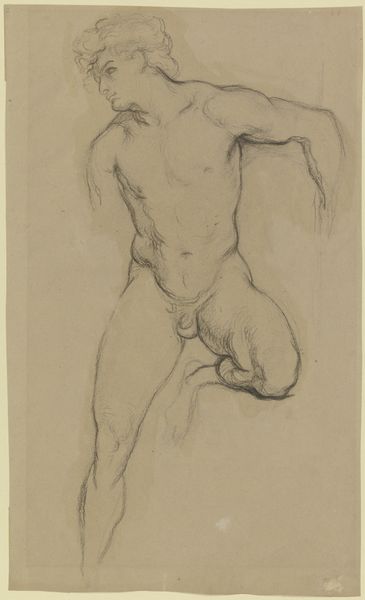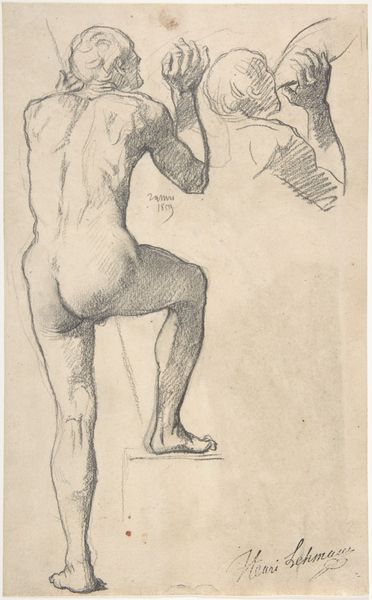
drawing, pencil
#
pencil drawn
#
drawing
#
light pencil work
#
shading to add clarity
#
pencil sketch
#
figuration
#
personal sketchbook
#
ink drawing experimentation
#
pen-ink sketch
#
pencil
#
sketchbook drawing
#
pencil work
#
academic-art
#
nude
#
sketchbook art
#
realism
Dimensions: height 147 mm, width 91 mm
Copyright: Rijks Museum: Open Domain
Curator: Looking at this drawing, “Onderlichaam van naakt jongetje,” or “Lower Body of a Naked Boy,” created by Jac van Looij sometime between 1865 and 1930, the focus on realism is immediately clear, especially given the sensitive use of pencil. Editor: Yes, I see what you mean. My initial response is that the drawing feels quite vulnerable. There's an almost awkward honesty in the portrayal of the child's form, rendered so plainly with those distinct pencil strokes. Curator: Indeed. In viewing a work such as this, produced within a context where academic art held considerable sway, we might consider its subtle challenges to traditional representation, perhaps a move toward a more modern appreciation of the human body outside of idealised forms. How might this reflect evolving attitudes towards childhood? Editor: Well, I see the potential for subversion. This sketch highlights the labor involved in representing flesh and form, from the build-up of shadow to create depth and dimension to the rendering of detail. It also challenges ideas about beauty as something divorced from production and manual dexterity. Pencil was, after all, the quintessential tool of the academic draftsperson. Curator: Right. Thinking about its presence in a possible personal sketchbook also sparks my interest. Where do these types of anatomical studies intersect with societal views about children, nudity, and even the male gaze? Editor: Absolutely. If this study appears within a sketchbook context, it gives us even more to consider about its immediate and personal use versus the more significant space that academic realism occupies, thinking about materiality, social implications, even commercial consumption. It invites analysis. Curator: It truly does. It shows us the artist, Looij, but also the art-making within its moment, allowing us to unpack various intersectional themes within art history. Editor: Precisely! And in doing so, allows us to challenge those histories too. Curator: This small work offers such rich avenues for dialogue and debate. Editor: Agreed; the art lies not only in the object, but in how it shifts as we shift our perceptions and tools of analysis.
Comments
No comments
Be the first to comment and join the conversation on the ultimate creative platform.
